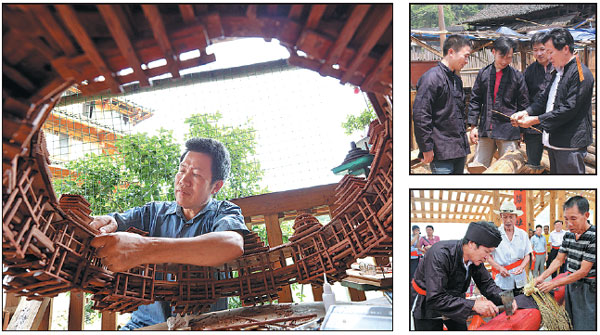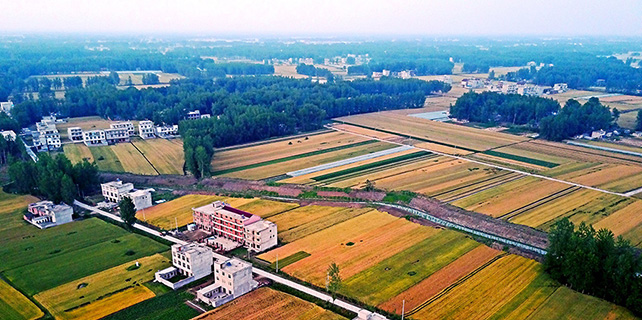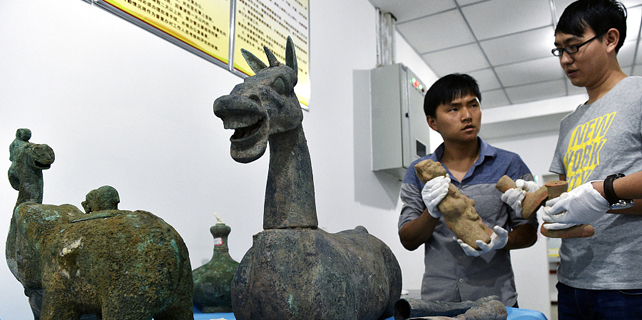Building a bridge to span the traditions of his heritage
|
Yang Siyu crafts a structure using skills and knowledge passed down from generations before. Gong Pukang / For China Daily |
Listed as one of the four most famous historical bridges in the world, Chengyang Shelter Bridge (Fengyu Qiao) in the Guangxi Zhuang autonomous region has an elaborate timber design and structure, remarkably without any screws or metal bolts.
Yang Siyu, the designated rebuilder of the bridge, is the heir to this national intangible cultural heritage style of construction synonymous with the Dong ethnic group. It is called a shelter bridge because traditional dwellings are built on it.
"It's true in Sanjiang Dong autonomous county that when there is river there is a shelter bridge, as our Dong people believe that the timber bridge not only provides a shelter but also keeps bad luck away and brings wind and rain on time," said Yang.
Born into a carpenter family, he was soon exposed to a world of wood and craftsmanship.
Yang's grandfather was one of the key constructors when the bridge was built in the 1920s.
"I picked up woodworking skills under my father's watchful eye when I was just 12 years old", said Yang.
His routine and schedule was extremely strict and Yang started with the very first step, chopping wood. Gradually he mastered the basic skills and soon started making the buckets which Dong brides carry as their dowry.
"I visited villages to make numerous buckets for brides, that is how I came to know the structure of a shelter bridge," he said. "Woodworking provides the first basic principles."
In 1983 when Chengyang bridge was destroyed by floods, a group of experts was sent to help restore it.
However, the restoration soon faced problems as no one knew how to reorganize the thousands of wooden parts that were torn down even though each part was carefully marked.
The bridge team then turned to Yang and his father for help.
The father and son managed to collect the materials for reconstruction and relocate the beam and poles by mental calculation over a period of weeks.
The experts were stunned both by their efficiency and accuracy, and Yang's fame began to spread.
"The key lies in the mortise-tenon joint, where one piece of wood is inserted into another. Get that right and the rest will follow. Restoration is just like piling up the building blocks once the joints are secure and accurate," explained Yang.
Without calculators or blueprints, the 62-year-old craftsman has helped build 100 pillar-supported dwelling bridges, 12 shelter bridges, and more than 300 models.
"I went to primary school for one year and then dropped out," a regret he still harbors but he is now an honored Master of China Arts and Crafts.
However, he would rather call himself a craftsman, able to construct an intricate bridge from the simplest first steps.
"Buildings with steel and concrete are no doubt solid but the timber building of the Dong is more inspiring and beautiful because it's much closer to nature," said Yang. "I have a responsibility to pass the wisdom of our ancestors to the younger generations."
He offers training to young people and more than 100 apprentices are ready to inherit the skills.
He has raised money to start a customs and crafts museum which teaches local customs free of charge. The bridge builder is spanning the generations.

















